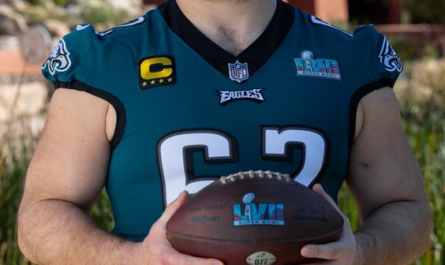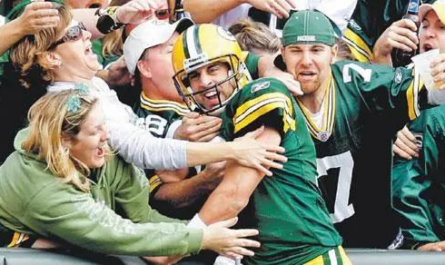Unleashing the Positive: How Dogs Might Benefit Tom Brady
As one of the greatest quarterbacks in NFL history with a record six Super Bowl championships, Tom Brady has achieved immense success on the football field. However, the demanding lifestyle and pressures of being an elite athlete can take both a mental and physical toll. While Brady maintains an intense training regimen and dedication to his craft, it’s clear he also values maintaining balance and wellness in his life outside of sports. That’s where a dog could potentially help—the benefits of canine companionship are well documented and align well with areas Brady may appreciate for his overall well-being. While speculation, exploring how dogs could positively impact the legendary quarterback provides an interesting perspective.
Stress Relief and Mental Wellbeing
Playing quarterback in the NFL comes with immense responsibility and scrutiny. Every decision is dissected and second-guessed, wins and losses feel magnified, and injuries are an inevitable occupational hazard. The mental strain of shouldering such pressure year after year cannot be overstated. Studies show that interacting with dogs has been shown to lower levels of cortisol, the primary stress hormone, while increasing feel-good chemicals like oxytocin, dopamine, and serotonin (Nagengast et al., 1997; Odendaal & Meintjes, 2003). For Brady, having a furry friend provide unconditional affection could help counterbalance the stressors of his high-pressure job.
Beyond lowering physiological stress, dogs also provide a mental break and distraction from worries. Playing fetch, going for walks, or simply petting a dog has been found to reduce rumination on negative thoughts (Beetz et al., 2012). For Brady, coming home to an excited dog after a tough loss or injury could help shift his mindset. The focus required in training or playing with a dog also improves concentration and problem-solving skills, counteracting mental fatigue (Vormbrock & Grossberg, 1988). Getting outside for walks or play sessions with a dog also exposes Brady to fresh air, sunshine, and greenery—all of which boost mood and well-being (Bratman et al., 2015).
Improved Physical Health
At 44 years old, Brady is remarkably fit and dedicated to his physical training. However, maintaining conditioning becomes more challenging as age advances. Having a dog could complement his existing fitness routine in a low-impact way. Most dogs require at least 30 minutes of walking or playtime per day. This provides a reason for Brady to get outside and stay active, even on rest days. Low-intensity exercise like walking has been shown to improve cardiovascular health as much as higher-intensity workouts (Lee & Pate, 2007).
Dogs also encourage activity through play. Throwing balls, playing fetch, or flinging toys gets owners moving in fun new ways. This type of play burns calories and works different muscle groups than traditional workouts. It also reduces chances of overtraining by providing cross-training benefits. For elite athletes like Brady, cross-training helps prevent injury and supports recovery. The mental break that dogs provide during exercise also makes workouts more enjoyable. Being able to focus on a furry friend rather than perceived exertion makes being active more sustainable long-term.
Companionship and Unconditional Love
While Brady has a supportive family and career accomplishments to be proud of, he likely faces lonely moments too. Being constantly in the public eye and having personal relationships dissected can create feelings of isolation. Off-seasons also mean time apart from teammates and coaches—the support system of the locker room. A dog provides unconditional affection and acceptance no matter what. Their wagging tails and eager greetings at the door create a sense of comfort. Studies show petting dogs lowers cortisol and increases oxytocin, making owners feel more socially connected (Handlin et al., 2011; Odendaal & Meintjes, 2003).
For Brady, coming home to a dog’s unwavering love after a loss or criticism could help lift his spirits. Their excitement at his presence reminds him that he’s more than just a quarterback—he’s a beloved family member. During off-seasons, daily walks and play sessions give Brady bonding time and routine. This companionship could help alleviate loneliness and provide emotional support as he prepares for the next season alone. Overall, a dog offers the type of stress-free affection and joy that many athletes seek to find balance in their high-pressure lives.
Sense of Purpose
Along with the mental break dogs provide, they also instill a sense of responsibility that gives structure. Caring for another living being creates routine through daily tasks like feeding, walking, grooming, and playing. This responsibility can help athletes struggling with transitions, especially post-retirement. For Brady, having a dog to care for during the off-season would provide purposeful tasks to fill his time. It could also give him motivation to maintain a schedule even without team commitments. Studies show pet owners experience less depression and have a greater sense of purpose in life (Serpell, 1991).
Additionally, training a dog is rewarding and gives clear goals. Brady could work on obedience, agility, or other skills as a hobby. Training sessions provide mental stimulation in setting and achieving objectives outside of football. The progress made bonding with and teaching a dog also boosts self-esteem. For an athlete at the top of his game like Brady, a canine companion offers non-sports related accomplishments to focus on to maintain well-roundedness. Overall, the responsibility of dog care could help Brady avoid an identity crisis and stay motivated during time away from the field.
Social Connection
While Brady is a public figure, he may still value opportunities to meet new people outside of the tight-knit football community. Dogs are natural conversation starters and ice-breakers. Regular walks and trips to dog parks provide Brady chances to interact with other dog owners. Casual discussions while watching dogs play often lead to learning more about others. These social interactions help combat loneliness and expand one’s support network. Studies show dog owners experience less social isolation and greater social capital in their neighborhoods (Wood et al., 2015).
For Brady, striking up conversations with locals near his home could help him feel more connected to his community on a personal level rather than just a celebrity. Meeting regular people outside of the sports world may provide refreshing perspective and low-pressure socialization. Dog parks in particular introduce Brady to a diverse community that shares his interest in canine companionship rather than his fame. Making friends this way could give Brady opportunities for low-key get-togethers outside the public eye to further reduce feelings of isolation. Overall, dogs act as facilitators for Brady to naturally build relationships and interact with others on a more equal footing.
Overall Well-being
When considering all the individual benefits of dog ownership—stress relief, physical activity, unconditional love, purpose, and social connection—it’s clear why having a dog results in greater overall well-being and quality of life. Studies consistently show lower levels of depression, anxiety, and loneliness in dog owners compared to non-owners (Mubanga et al., 2017; Wood et al., 2018). For athletes like Brady, dogs may provide an even greater advantage by helping maintain work-life balance and mental resilience through ups and downs of a career. Their ability to enhance physical, mental, and social health supports recovery from injuries as well.
Additionally, some research suggests dog ownership may have direct performance benefits through improved cardiovascular function and immune response (Fahey & Perlman, 2018; Fine, 2016). For Brady, walks and play sessions with a dog keep his heart healthy while social interactions boost immunity. The mental break dogs provide also supports better sleep, which is critical for healing and growth. Overall, the holistic benefits of canine companionship align perfectly with what elite athletes need to not just perform but thrive long-term both on and off the field. While speculative, dogs could certainly aid Brady’s pursuit of longevity, wellness, and quality of life beyond football.
In conclusion, there are undeniable ways in which a dog could positively impact Tom Brady’s life, considering the wide-ranging benefits of canine companionship. Their ability to relieve stress, encourage activity, provide unconditional love and social support, instill routine, and boost overall well-being directly addresses many needs high-performing athletes face. Of course, this is just speculation since Brady’s canine ownership status is unknown. However, the potential advantages of including a furry friend in his wellness regimen are clear. For an athlete of Brady’s caliber committed to continual growth, embracing the positive impact of dogs makes sense.



